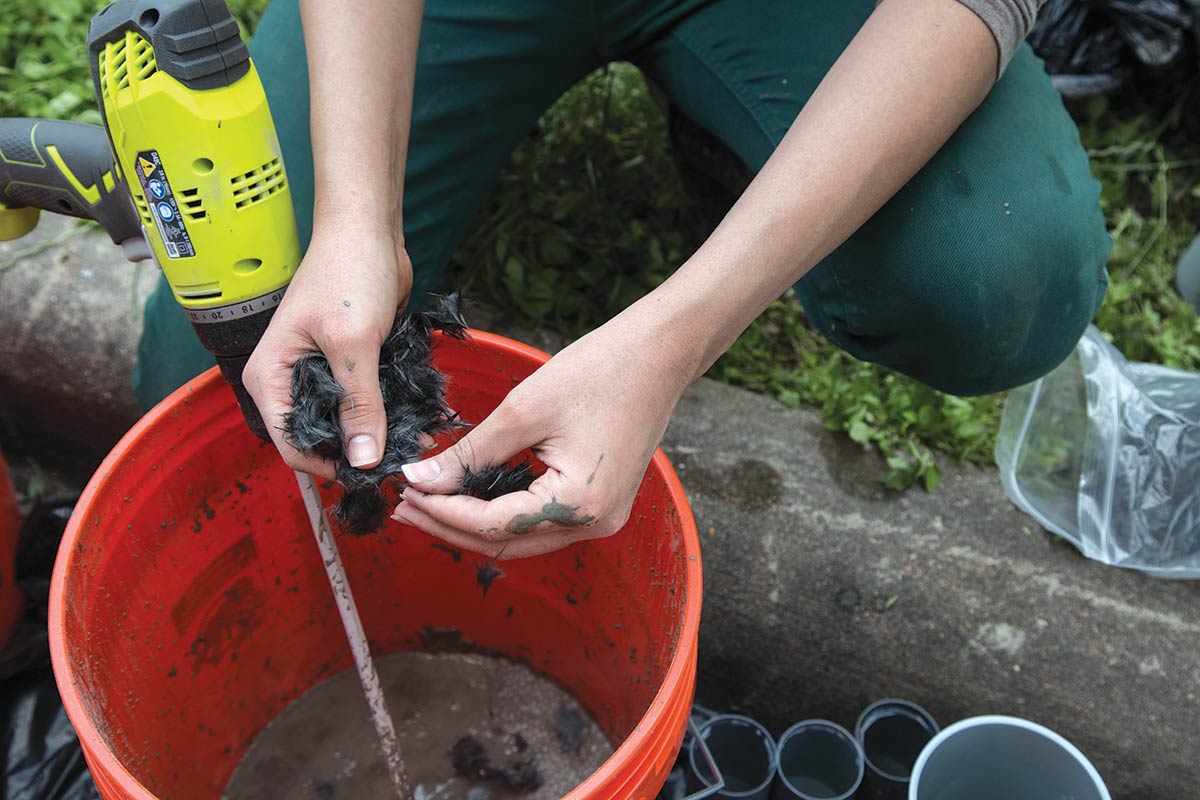“Smart” Cement Could Talk to Engineers about Well Conditions

With the rattle and hum of a giant drilling bit churning through clay, a new frontier in oil and gas exploration began at the University of Houston this spring.
A 40-foot well, designed to test “smart” cement developed by Cumaraswamy Vipulanandan, professor of civil and environmental engineering, was drilled on the outskirts of the University’s Energy Research Park, a complex of research labs, technology incubation space and administrative offices just two miles from the main campus.
The results could be far-reaching. Knowing where to find oil or natural gas is the first step in drilling a successful well, but what happens next — and how those next steps are performed — is crucial.
Vipulanandan’s smart cement is a new piezoresistive material that can be monitored from an offshore platform thousands of feet above the well or even from hundreds of miles away. He is also developing the monitoring system.
Cement slurry is pumped into a well to hold the casing to the natural geological formations, as well as to isolate the formations, even thousands of feet under the ocean floor.

“Currently, how do you know the cement is setting?” Vipulanandan asks. “You don’t know. With smart cement, you can monitor it.”
The cement has been tested in the lab, but the test well will allow the researcher and graduate students working with him to see how it works under more natural conditions.
Smart cement isn’t regular concrete studded with sensing materials — Vipulanandan said embedding sensors in the cement mixture would result in weaker cement. Instead, the sensing materials — less than 0.1 percent by weight — are actually incorporated into the mixture, forming a “bulk sensor” with sensing properties several hundred times higher than current cements. The performance is further enhanced using nanotechnology and surfactant technology.
The modifications enhance the mechanical properties of the smart cement, without affecting the rheological properties.
The sensors measure changes within the material, allowing those who monitor the well to determine if it has set or is cracking, if pressure is increasing and other performance variables.
Cement’s critical role in offshore wells came into sharp relief after the 2010 Deepwater Horizon explosion, which killed 11 people and spilled almost 5 million barrels of oil into the Gulf of Mexico. Regulators and government investigative panels found the accident was caused by deficient cementing.
Smart cement could help to avoid similar accidents.
Vipulanandan, director of the Center for Innovative Grouting Materials and Technology at the Cullen College of Engineering, as well as director of the Texas Hurricane Center for Innovative Technology, began working on the cement in 2012 with a $2.6 million grant from the Department of Energy. Oilfield services company Baker Hughes provided additional funding.
Vipulanandan compares the smart cement to the sensors in your skin. “When someone touches you, it will tell you when they do it, how much pressure they are applying,” he said.
But the brain might be a better analogy, as the cement reports its status to engineers and other monitors — Is it curing? Has it set? Has there been fluid loss or circulation loss? Are cracks forming that could allow hydrocarbons to escape?
And that reporting doesn’t stop once the well begins pumping oil or natural gas, Vipulanandan said.
“People can monitor the cement throughout its entire lifetime.”
Next Story:
Teaching by Example
Former Shell President John Hofmeister shows the next generation of energy leaders how it’s done …